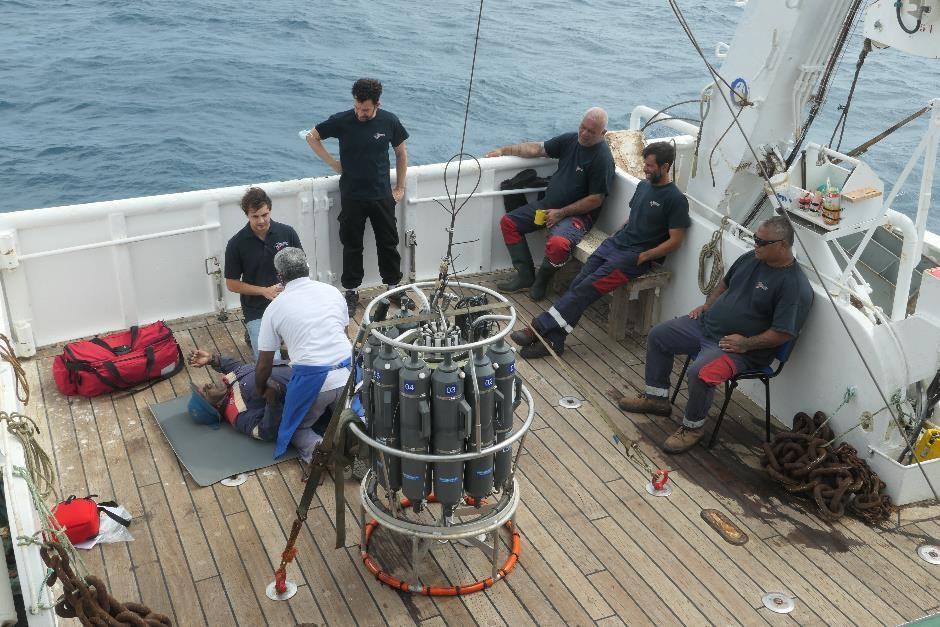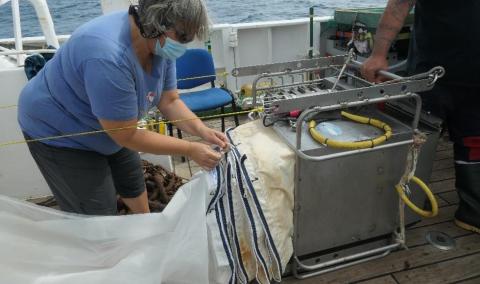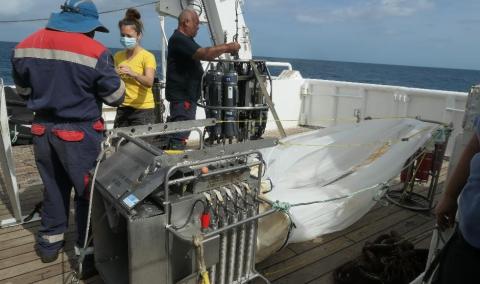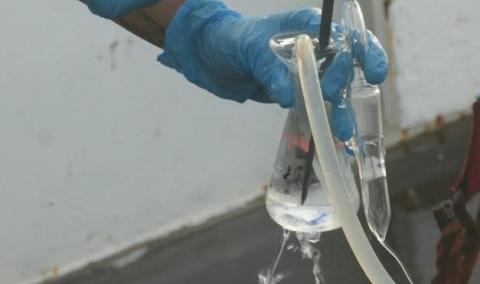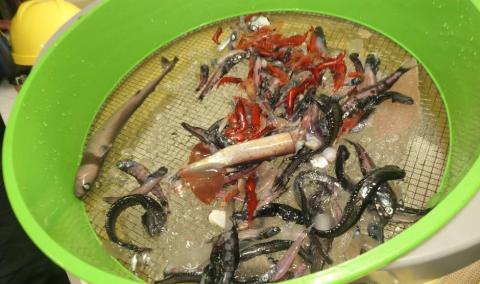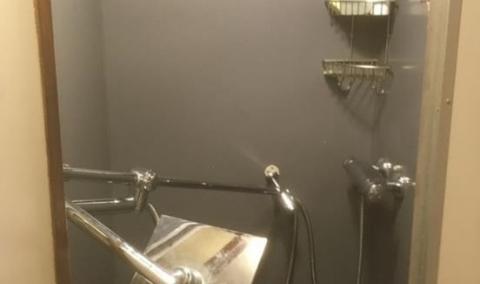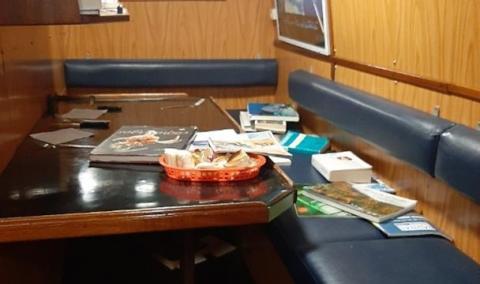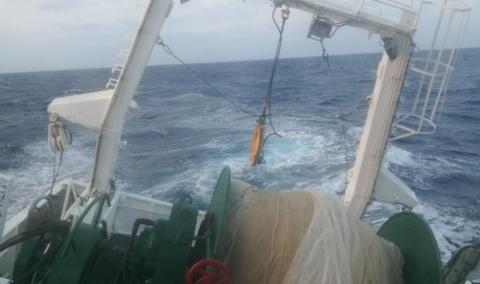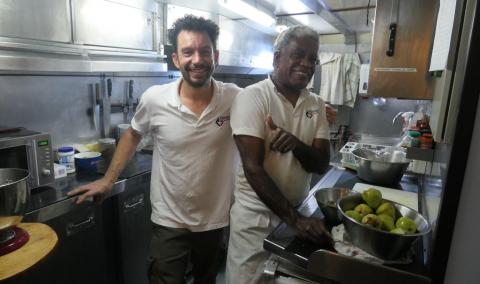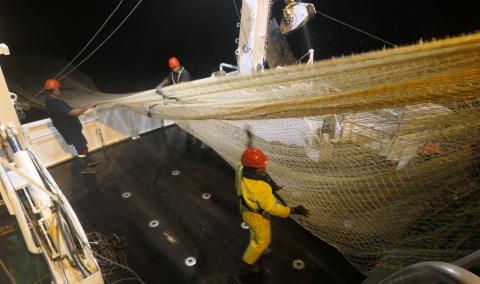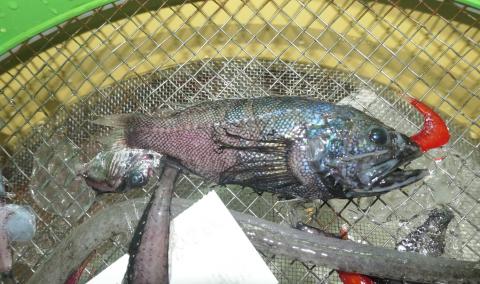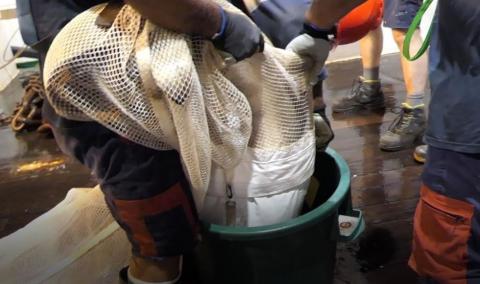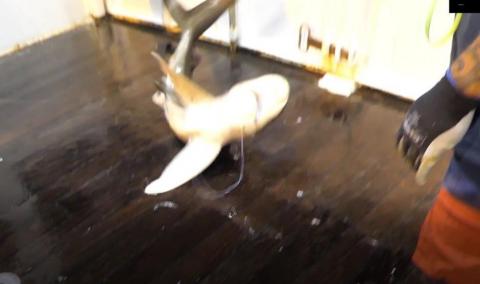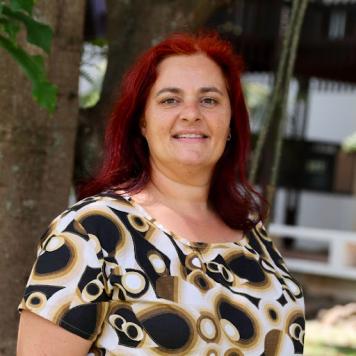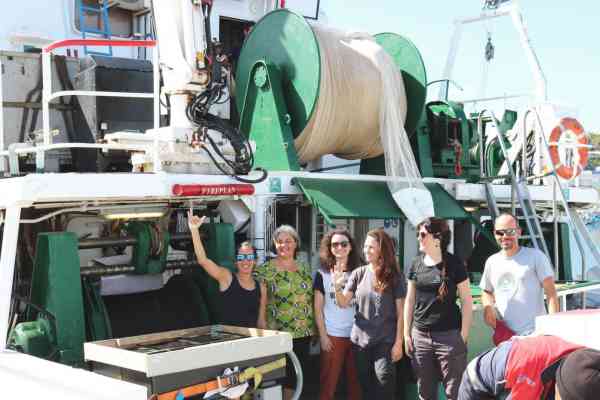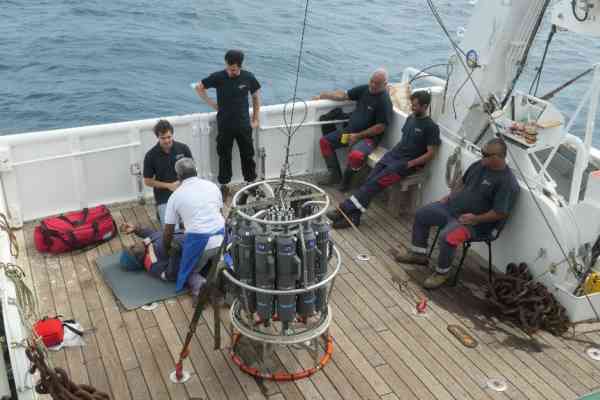Photo: The first mate gives a first aid training session to the crew while we are at anchor
2021 September 10 - Station 2
We took advantage of a quiet morning to finish adjusting our instruments, with particular attention given to the zooplankton net. The chief mechanic and one sailor spent a lot of time re-fabricating a broken part and re-welding it to the device, it also took some time for the electronic technician to render the net functional. The crew meanwhile spent the morning running through first aid exercises.
We left our mooring at 12:30 p.m. and arrived at sampling station number 2 around 15:30 pm. During this time were able to carry out all operations despite a 2 m swell that made the work difficult. The trawling at the end of the day brought us a nice diversity of species, including a small cookiecutter shark (Isistius brasiliensis) of about 20 cm that we released alive after having measured it.
2021 September 11 - Station 3
We continued our way north with a side swell that made navigation difficult and big rolls that sometimes surprised us and caused damage in the boat even though everything is designed to handle these movements. One of the shower heads came off the wall, but was quickly fixed by the mechanics. Books ended up on the floor in the dining room and there was disaster in the kitchen, where two appetizer dishes were flung to the floor, along with many, now broken, plates.
We arrived at station 3 at 4:00 p.m. but decided to cancel the operations as the sea was too strong. With more than 25 knot winds, manoeuvres become dangerous for sailors and the risk of damaging the electronic equipment, if it were to hit the side of the boat, is too great. So, we continued our way north at a slow pace to station 4, leaving the waters of New Caledonia to enter those of the Solomon Islands.
2021 September 12 - Station 4
It’s easy to lose track of time when you are at sea, working day in and day out and every day is the same, but on board the RV Alis we always know when it's Sunday because that's the day we have croissants and pains au chocolat for breakfast! A festive dish follows at noon – this Sunday it was couscous and a cheese plate for dessert in the evening. Enjoying these meals allows us to reboot for another week. All sailors will tell you that the most important person on board is not the captain, but the cook, and we are lucky to have a very good one on board who, along with his assistant cook, prepares our food whatever the weather.
The winds had slightly improved to 18-20 knots and a swell of 2.5 m by 4 p.m., so we then started the work sequence at sampling station 4. With better weather and a better run-in of the sequences, we were faster completing our manoeuvres which allowed us for the first time to do two trawls at the end of the day instead of just one. After the oblique trawl between the surface and 200 m, we did a horizontal deep trawl at 500 m which brought back some unusual fish and shrimps. The sailors day ended just after midnight and for the scientists it took an extra hour to sort the specimens, take them down to the freezer and clean the equipment and the lab in preparation for the next day.
2021 September 14 - Station 6
We had hoped for better weather in the Solomon Islands, but the cross swell made the transit between stations very difficult and it is always an added challenge for the few who get seasick.
Station 6 went well, and we were able to get all of our work done between 3:45 and 11:55 pm. We got a big surprise when the first trawl was hauled up, finding a shark of about 1.5 m in the net. This was the first time in the 10 years we have been trawling (262 trawls to date), that we had caught a fish longer than 50 cm. It was an oceanic whitetip shark (Carcharhinus longimanus) and had a hook in the corner of its mouth, along with a piece of longline. It was alive and well and we put it back in the water immediately. On the second trawl, we amazingly had the same scenario – another oceanic whitetip shark, of similar size, but this one without a hook, it also went back into the water quite alive. It seemed that these sharks followed the boat and got caught in the trawl as the net was brought back on board. We hoped this would not happen again, as it is always dangerous for sailors to handle a shark, and it is probably not a good experience for the shark either, and the presence of big fish spoils the whole content of the trawl.
